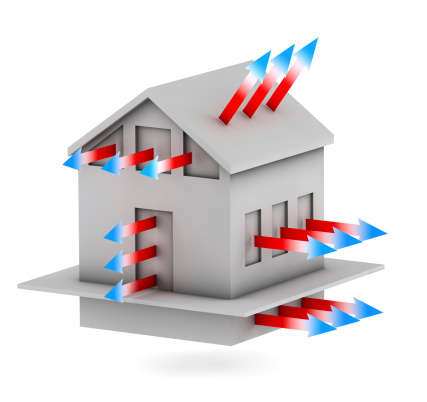It's a question on the minds of a lot of people at this time of year: What type of furnace maintenance can I do all by myself?
The quick answer is, only the type that you are confident about safely handling. So if you're familiar with the working components of your furnace and follow directions carefully, by all means give it a try yourself.
 Still, make no mistake about the benefits of an annual furnace checkup conducted by a licensed furnace technician. The basic maintenance you can do on your furnace, while helpful, is no substitute for the more substantive inspection and treatment that only a professional technician can provide. In addition, with years of experience behind him, a professional technician can troubleshoot and problem-solve unforeseen issues with ease.
Still, make no mistake about the benefits of an annual furnace checkup conducted by a licensed furnace technician. The basic maintenance you can do on your furnace, while helpful, is no substitute for the more substantive inspection and treatment that only a professional technician can provide. In addition, with years of experience behind him, a professional technician can troubleshoot and problem-solve unforeseen issues with ease.
A yearly furnace checkup from a heating system service company involves:
- Cleaning and lubricating all the moving parts – vital to the smooth operation of your furnace
- Inspecting the entire heating system, beginning with the all-important heat exchanger and extending to the thermostat
- Setting the burners for proper combustion and ignition
- Tightening the electrical connections and measuring the voltage
- Inspecting the condensate drain, chimney and flue
- Surveying the condition and tension of the fan belt
- Conducting a carbon monoxide test to ensure the continued safety of your family
If you want to get a jump-start on your furnace's annual checkup, grab your owner's manual, a flashlight, a set of basic tools, an emery board, a drinking straw and a vacuum with attachments. Then, if you wish, check these basic maintenance tasks off a list. If any appear too complex or intimidating, your furnace technician will gladly serve as your wing-man.
Get a jump-start on your heating system maintenance:
- Check the color of the burner flames. They should be blue. Yellow flames signify dirty burners, which will require professional cleaning
- Turn off the power to your furnace. Then use a drinking straw to remove dust from around the pilot. A dirty pilot can trigger a false reading that the pilot isn't lit.
- Use the straw to blow dust from the surface igniters, but be gentle. This is a part that can break easily.
- Vacuum around the burners. Then lift the blower door and vacuum the blower compartment .
- Remove the bolts that hold the blower in place. Then carefully lift it out. Clean the blower blades with a small brush; an old, soft toothbrush works great. Then vacuum the blower blades. Be careful not to disturb the wiring and the weights on the blades.
- Change the furnace filter – a regular maintenance task you probably will have to undertake every few months.
- Remove residue from the sensor with an emery board.
- Check the drive belt for cracks and tears. A worn belt must be replaced – and with a tension that deflects between ½ and ¾ inch.
- Apply lightweight machine oil exactly where your furnace owner's manual instructs. Two or three drops should suffice.
Working together on the maintenance of your furnace, a heating system service company can:
- Spot any small but burgeoning furnace problems so that they can be fixed promptly
- Help keep your utility bills in check since a clean and efficient furnace costs less money to run
- Preserve the investment you've made in your furnace because regular and careful maintenance on your furnace should extend its lifespan
- Keep your indoor air quality in peak condition since your furnace will be devoid of dust, dirt, grime and mold that can contaminate the air
- Ensure that your furnace is not emitting harmful levels of carbon monoxide








